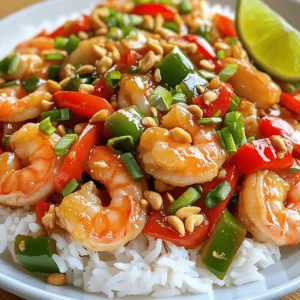Spice up your dinner with this delicious Kung Pao Shrimp recipe! Featuring succulent shrimp, vibrant bell peppers, and crunchy peanuts, this dish is perfect for a quick weeknight meal or a festive gathering. With a crispy texture and a flavorful sauce, it’s sure to impress! Ready in just 25 minutes, you'll want to serve it over rice or quinoa for a complete feast. Click through to explore this recipe and bring a taste of the fiesta to your kitchen!
1 pound large shrimp, peeled and deveined
1 tablespoon cornstarch
2 tablespoons sesame oil, divided
1 red bell pepper, diced into bite-sized pieces
1 green bell pepper, diced into bite-sized pieces
1/2 cup unsalted roasted peanuts
3 green onions, sliced thinly (whites and greens kept separate)
3 cloves garlic, minced finely
1-inch piece fresh ginger, minced finely
2 tablespoons soy sauce
1 tablespoon rice vinegar
1 tablespoon hoisin sauce
1 tablespoon chili paste (adjust based on your preferred spice level)
Salt and freshly ground black pepper to taste
Cooked white rice or quinoa, for serving
